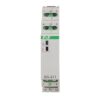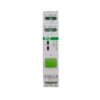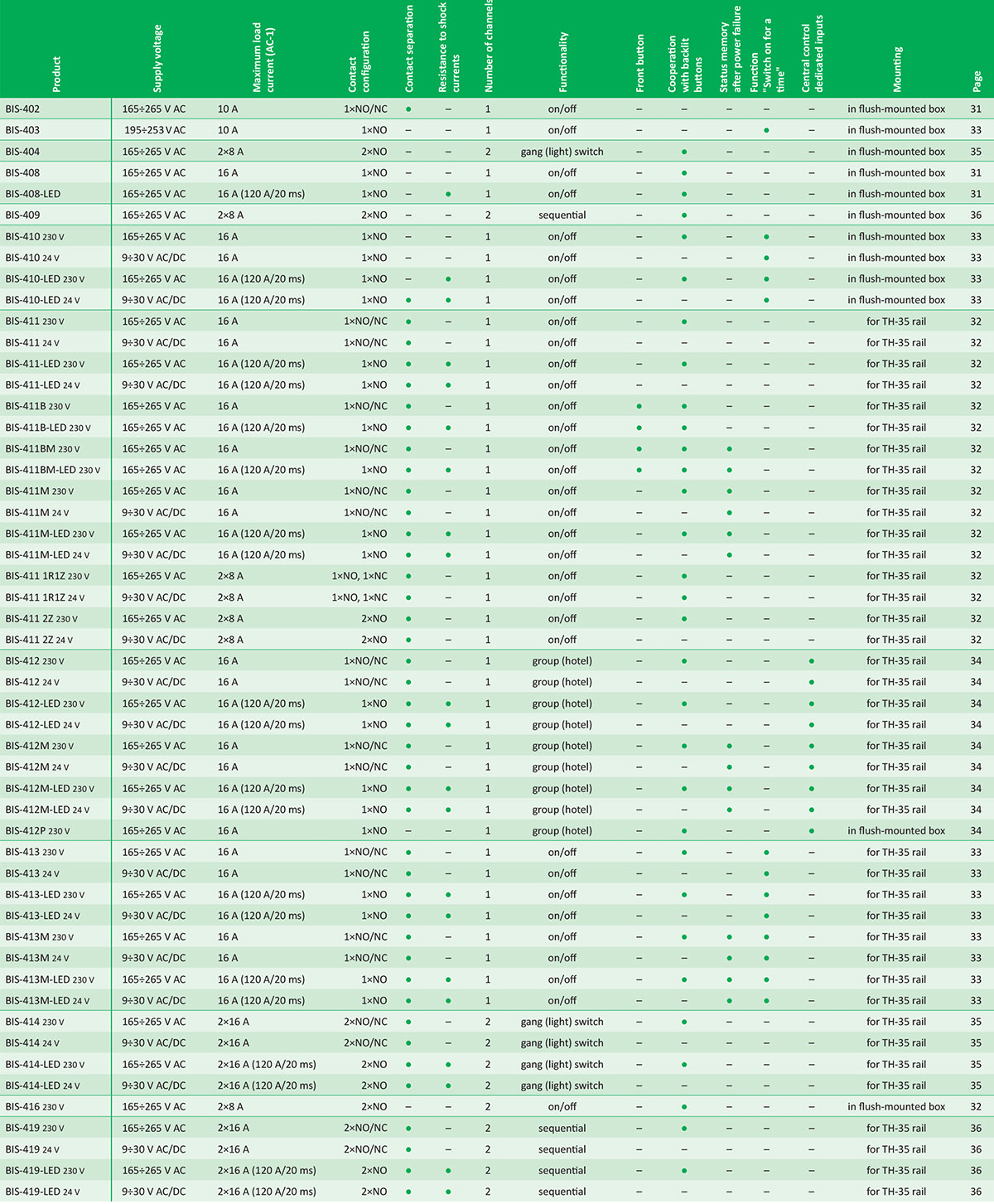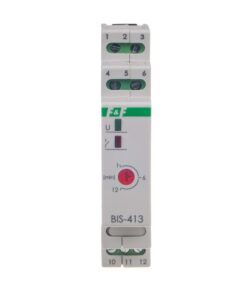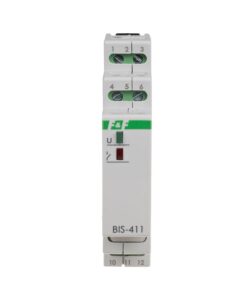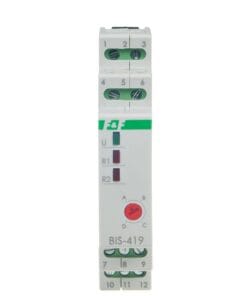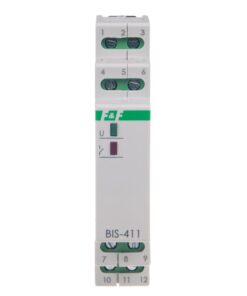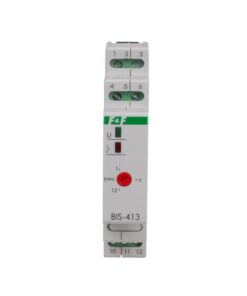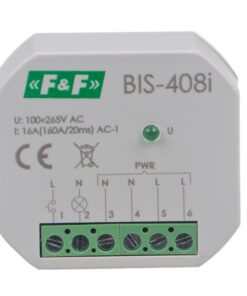Functioning
Electronic bistable pulse relay BIS-413M-LED allows switching on or off the lighting or other device from several different points by parallel connected, momentary (bell) control switches.
The receiver is switched on after a current pulse caused by pressing any momentary (bell) button connected to the relay. The receiver is turned off after the next impulse or automatically after the set off time. A longer pressing of the momentary button, lasting at least 2 seconds, turns on the relay permanently. The relay will be turned off only after pressing the momentary button again (or after a power supply failure). The supply voltage is indicated by the illumination of the green LED marked as U. Switching the relay on and the countdown to automatic switch-off is signalled by the blinking of the red LED. Permanent switching of the relay is signalled by continuous lighting of the red LED.
The relay has the feature of the so-called „memory” of the contact position, which means when the power supply is switched back on, the relay will be restored to the state it was in when the power supply was switched off.
The “LED” version of the relay is equipped with a contact designed to cooperate with receivers with high starting current, such as: LED fluorescent lamps, ESL fluorescent lamps, electronic transformers, discharge lamps, etc.
BIS-413M-LED 24V is not compatible with backlit buttons.
Table for loads supplied with 230 V AC

Tips
Illuminated buttons
If too many illuminated buttons are connected, the lighting may switch on spontaneously or switch on permanently. Maximum load current The contact current given in the technical data is the maximum value and may be subject to restrictions – more information. If the information provided indicates that the relay in the device is insufficient, it is recommended to use an external switching element (e.g. contactor) adapted to switch large surge currents. State memory The relay version with the letter “M” has a contact position memory, i.e. after switching on the power supply, the relay state will be restored to the state it was in at the time of switching off the power supply. Resistance to surge currents The device uses an “inrush” type relay characterized by high resistance to short-term surge currents generated, for example, when switching on LED lamps, ESL fluorescent lamps, electronic transformers, discharge lamps, etc.


